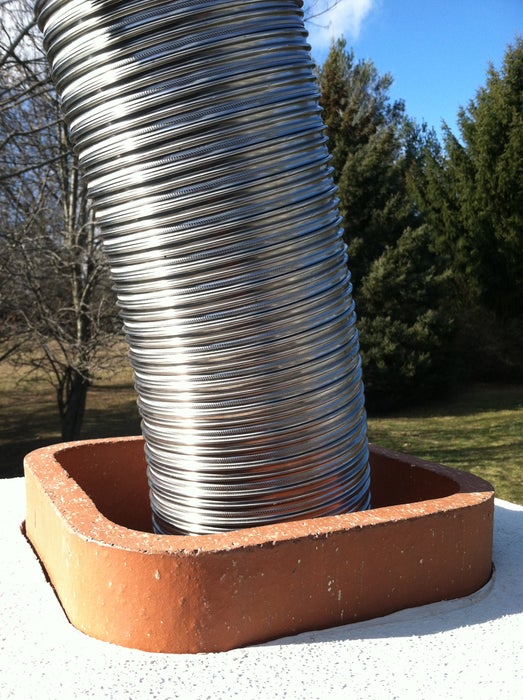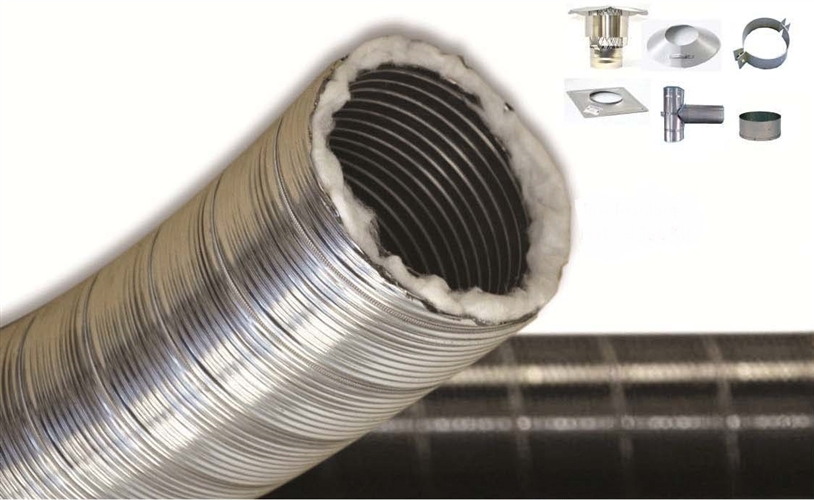How to Choose the Right Size Chimney Liner
Your Comprehensive Guide to Choosing the Right Size Chimney Liner
Picking the right size for your chimney liner is not something you do every day. It is one of those seldom thought about, but crucial decisions that have significant implications for your home. Whether you are knee-deep in the middle of a home renovation, considering an upgrade to your current chimney liner, or dealing with a malfunctioning heating appliance, the question that inevitably comes up is – “How do I choose the right size chimney liner?”
This blog post will answer that question for you, providing a clear and comprehensive guide that demystifies the process. From understanding what a chimney liner is to why the size matters and how to select the perfect one, All Pro Chimney got you covered. We will break down the process into manageable steps and throw in some real-life examples to make things even more accessible. So, sit back, grab a cup of your favorite brew, and let’s dive into the world of chimney liners.
Ready for a top-notch chimney liner installation?
Our experts are just a click away!
The Basics: Understanding Chimney Liner Sizes
Before we move into the nitty-gritty of choosing the right chimney liner size, it is essential to understand what we are talking about. A chimney liner, or flue liner, is a conduit installed in chimneys to vent the products of combustion. Getting the right size for your liner ensures optimal performance of your fireplace and the safety of your home.
Effects of a Wrong Size Chimney Liner
Choosing a chimney liner that is too big or too small can lead to a host of problems. Here are some potential effects of having a wrong size chimney liner:
• Inefficient Combustion: A liner that is too large may lead to inadequate draft, which can result in inefficient combustion and lower heat output from your appliance.
• Excessive Creosote Build-up: A liner that is too big can cause cooler flue temperatures, leading to excessive creosote build-up, increasing the risk of a chimney fire. Need help cleaning creosote? We can help.
• Increased Risk of Carbon Monoxide Leakage: If the liner is too small, it might not effectively vent out all the combustion gases, increasing the risk of carbon monoxide leakage into your home.
• Accelerated Wear and Tear: A wrong size liner can cause an imbalance in the heating system and lead to accelerated wear and tear on your chimney and the heating appliance.
Understanding these potential issues underscores the importance of choosing the right size chimney liner. In the next section, we will walk you through the steps to ensure you make the right choice.

Steps to Choose the Correct Chimney Liner Size
In selecting the appropriate size of a chimney liner, remember this crucial piece of advice: the chimney liner should never be smaller than the exhaust hole of the appliance. Furthermore, the area of the liner should not exceed three times the area of the appliance’s exhaust hole. Let us break down this concept into actionable steps:
- Measure the Exhaust Hole: Start by measuring the size of the exhaust hole in your appliance. This will serve as the baseline for choosing the correct chimney liner size.
- Determine the Maximum Liner Size: Multiply the area of the exhaust hole by three. This gives you the maximum permissible area of your chimney liner.
- Choose a Liner Size: Choose a chimney liner size that falls between the size of your exhaust hole and the maximum liner size you have calculated. If available, refer to the manufacturer’s guidelines to help make this decision.
- Visit Your Local Chimney Services Company: Finally, before making your purchase, it is advisable to visit a local chimney services company. These professionals can provide additional advice, answer any questions you may have, and help ensure you are making the best decision for your specific setup.
Boost the performance and safety of your gas fireplace
with our specialized liner installations.
Request an EstimateWrapping It Up: Your Guide to Chimney Liner Sizes
Choosing the right size chimney liner is no small task, but we hope this comprehensive guide has made the process more manageable and clearer. Remember, the size of your chimney liner is essential not only for the efficient functioning of your heating appliance but also for the safety of your home. Here is a quick recap of what we have covered:
- Understanding Chimney Liners: Chimney liners, or flue liners, are conduits installed in chimneys to vent out the products of combustion. The size of the liner significantly affects the safety and performance of your appliance.
- Effects of Incorrect Liner Size: An improperly sized liner can lead to inefficient combustion, excessive creosote build-up, increased carbon monoxide risk, and accelerated wear and tear on your chimney and appliance.
- Choosing the Correct Liner Size: Measure the exhaust hole of your appliance, calculate the maximum permissible liner size, and select a liner that falls within these limits. Remember to consult with a local chimney services company before making your final decision.
Remember to consult with a local chimney services company before making your final decision.
Choosing the right size liner is crucial, but with careful calculations and expert advice, you can make an informed decision. Do not forget to visit our other blog entries for more tips and
insights into all things related to your home.We hope this blog has been a valuable resource in your journey to selecting the right chimney liner. Keep stoking those fires and stay warm!

Frequently Asked Questions About Chimney Liner Sizes
Q:Why is the size of the chimney liner important?
A: The size of the chimney liner is crucial for the efficient and safe operation of your heating appliance. An appropriately sized liner ensures optimal draft for combustion, minimizes creosote build-up, and effectively vents out the combustion gases, reducing the risk of carbon monoxide leakage into your home.
Q: Can I use the same size chimney liner for different types of fireplaces?
A: Not necessarily. The size of the chimney liner needs to match the exhaust hole of the appliance it is
serving. Since different types of fireplaces (like wood-burning stoves and gas-burning fireplaces) may have
different exhaust hole sizes, they might require different size chimney liners.
Q: How often should I replace my chimney liner?
A: The frequency of chimney liner replacement depends on several factors, including the type of liner, the
type of fuel used in your fireplace, and how often you use your fireplace. Generally, it is advisable to have your chimney inspected annually by a professional like us who can assess the condition of your liner and
recommend a replacement if necessary.
Q: Is installing a chimney liner a DIY project?
A: While it is technically possible to install a chimney liner yourself, it is usually best to hire a professional.
Incorrect installation can lead to inefficiency, increased fire risk, and potential exposure to harmful gases. A professional chimney service can ensure the liner is installed correctly and safely.
Unsure about your chimney liner's state?
Book a comprehensive inspection with our pros today.
Request an Estimate
I agreed when you stated that the size of the exhaust hole in our appliance must be measured. My friend told me that their chimney needs lining. I should advise her to hire a professional chimney lining service to ensure reliable work.